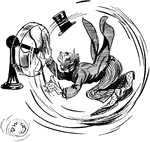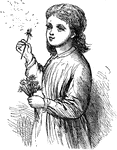Clipart tagged: ‘blow’

Blowing-Machine
"An American machine, introduced into England by Mr. Ellis. It consists of an iron cylindrical casing…

Glass Blowing and Stretching
In making sheet glass, a very large lump of molten glass is gathered on the rod as is shown at (a).…

Egyptian Glassblowers
"The form of the bottle and the use of the blow-pipe are unequivocally indicated; and the green hue,…

Siren
"Rotate the disk slowly, blowing meanwhile through a tube of about 3/16 inch bore, the nozzle of the…


